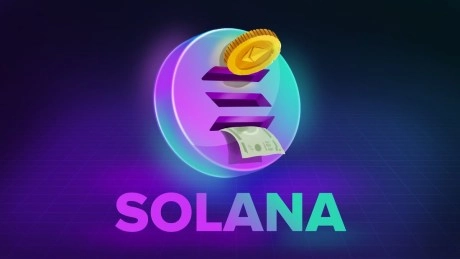For successful AI-blockchain integrations to become a reality, the infrastructure underpinning them needs a complete overhaul.
Dec 20, 2024, 5:57 p.m. UTC
Every few decades, a new technology emerges that changes everything: the personal computer in the 1980s, the internet in the 1990s, the smartphone in the 2000s. And as AI agents ride a wave of excitement into 2025, and the tech world isn’t asking whether AI agents will similarly reshape our lives — it’s asking how soon.
But for all the excitement, the promise of decentralized agents remains unfulfilled. Most so-called agents today are little more than glorified chatbots or copilots, incapable of true autonomy and complex task-handling — not the autopilots real AI agents should be. So, what’s holding back this revolution, and how do we move from theory to reality?
The current reality: true decentralized agents don’t exist yet
Let’s start with what’s out there today. If you’ve been scrolling through X/Twitter, you’ve likely seen a lot of buzz around bots like Truth Terminal and Freysa. They’re clever, highly engaging thought experiments — but they’re not decentralized agents. Not even close. What they really are are semi-scripted bots wrapped in mystique, incapable of autonomous decision-making and task execution. As a result they can’t learn, adapt or execute dynamically, at scale or otherwise.
Even more serious players in the AI-blockchain space have struggled to deliver on the promise of truly decentralized agents. Because traditional blockchains have no “natural” way of processing AI, many projects end up taking shortcuts. Some narrowly focus on verification, ensuring AI outputs are credible but failing to provide any meaningful utility once those outputs are brought on-chain.
Others emphasize execution but skip the critical step of decentralizing the AI inference process itself. Often, these solutions operate without validators or consensus mechanisms for AI outputs, effectively sidestepping the core principles of blockchain. These stopgap solutions might create flashy headlines with a strong narrative and sleek Minimum Viable Product (MVP), but they ultimately lack the substance needed for real-world utility.
These challenges to integrating AI with blockchain come down to the fact that today’s internet is designed with human users in mind, not AI. This is especially true when it comes to Web3, since blockchain infrastructure, which is meant to operate silently in the background, is instead dragged to the front-end in the form of clunky user interfaces and manual cross-chain coordination requests. AI agents don't adapt well to these chaotic data structures and UI patterns, and what the industry needs is a radical rethinking of how AI and blockchain systems are built to interact.
What AI agents need to succeed
For decentralized agents to become a reality, the infrastructure underpinning them needs a complete overhaul. The first and most fundamental challenge is enabling blockchain and AI to “talk” to each other seamlessly. AI generates probabilistic outputs and relies on real-time processing, while blockchains demand deterministic results and are constrained by transaction finality and throughput limitations. Bridging this divide necessitates custom-built infrastructure, which I'll discuss further in the next section.
The next step is scalability. Most traditional blockchains are prohibitively slow. Sure, they work fine for human-driven transactions, but agents operate at machine speed. Processing thousands — or millions — of interactions in real time? No chance. Therefore, a reimagined infrastructure must offer programmability for intricate multi-chain tasks and scalability to process millions of agent interactions without throttling the network.
Then there’s programmability. Today’s blockchains rely on rigid, if-this-then-that smart contracts, which are great for straightforward tasks but inadequate for the complex, multi-step workflows AI agents require. Think of an agent managing a DeFi trading strategy. It can’t just execute a buy or sell order — it needs to analyze data, validate its model, execute trades across chains and adjust based on real-time conditions. This is far beyond the capabilities of traditional blockchain programming.
Finally, there’s reliability. AI agents will eventually be tasked with high-stakes operations, and mistakes will be inconvenient at best, and devastating at worst. Current systems are prone to errors, especially when integrating outputs from large language models (LLMs). One wrong prediction, and an agent could wreak havoc, whether that’s draining a DeFi pool or executing a flawed financial strategy. To avoid this, the infrastructure needs to include automated guardrails, real-time validation and error correction baked into the system itself.
All this should be combined into a robust developer platform with durable primitives and on-chain infrastructure, so developers can build new products and experiences more efficiently and cost-effectively. Without this, AI will remain stuck in 2024 — relegated to copilots and playthings that hardly scratch the surface of what’s possible.
A full-stack approach to a complex challenge
So what does this agent-centric infrastructure look like? Given the technical complexity of integrating AI with blockchain, the best solution is to take a custom, full-stack approach, where every layer of the infrastructure — from consensus mechanisms to developer tools — is optimized for the specific demands of autonomous agents.
In addition to being able to orchestrate real-time, multi-step workflows, AI-first chains must include a proving system capable of handling a diverse range of machine learning models, from simple algorithms to advanced AIs. This level of fluidity demands an omnichain infrastructure that prioritizes speed, composability and scalability to allow agents to navigate and operate within a fragmented blockchain ecosystem without any specialized adaptations.
AI-first chains must also address the unique risks posed by integrating LLMs and other AI systems. To mitigate this, AI-first chains should embed safeguards at every layer, from validating inferences to ensuring alignment with user-defined goals. Priority capabilities include real-time error detection, decision validation and mechanisms to prevent agents from acting on faulty or malicious data.
From storytelling to solution-building
2024 saw a lot of early hype around AI agents, and 2025 is when the Web3 industry will actually earn it. This all begins with a radical reimagining of traditional blockchains where every layer — from on-chain execution to the application layer — is designed with AI agents in mind. Only then will AI agents be able to evolve from entertaining bots to indispensable operators and collaborators, redefining entire industries and upending the way we think about work and play.
It is increasingly clear that businesses that prioritize genuine, powerful AI-blockchain integrations will dominate the scene, providing valuable services that would be impossible to deploy on a traditional chain or Web2 platform. Within this competitive backdrop, the shift from human-centric systems to agent-centric ones isn’t optional; it’s inevitable.
Note: The views expressed in this column are those of the author and do not necessarily reflect those of CoinDesk, Inc. or its owners and affiliates.
David Pinger
David Pinger is the co-founder and CEO of Warden Protocol, a company that focuses on bringing safe AI to Web3. Before co-founding Warden, he led research and development at Qredo Labs, driving web3 innovations such as stateless chains, webassembly, and zero-knowledge proofs. Before Qredo, he held roles in product, data analytics, and operations at both Uber and Binance. David began his career as a financial analyst in venture capital and private equity, funding high-growth internet startups. He holds an MBA from Pantheon Sorbonne University.



